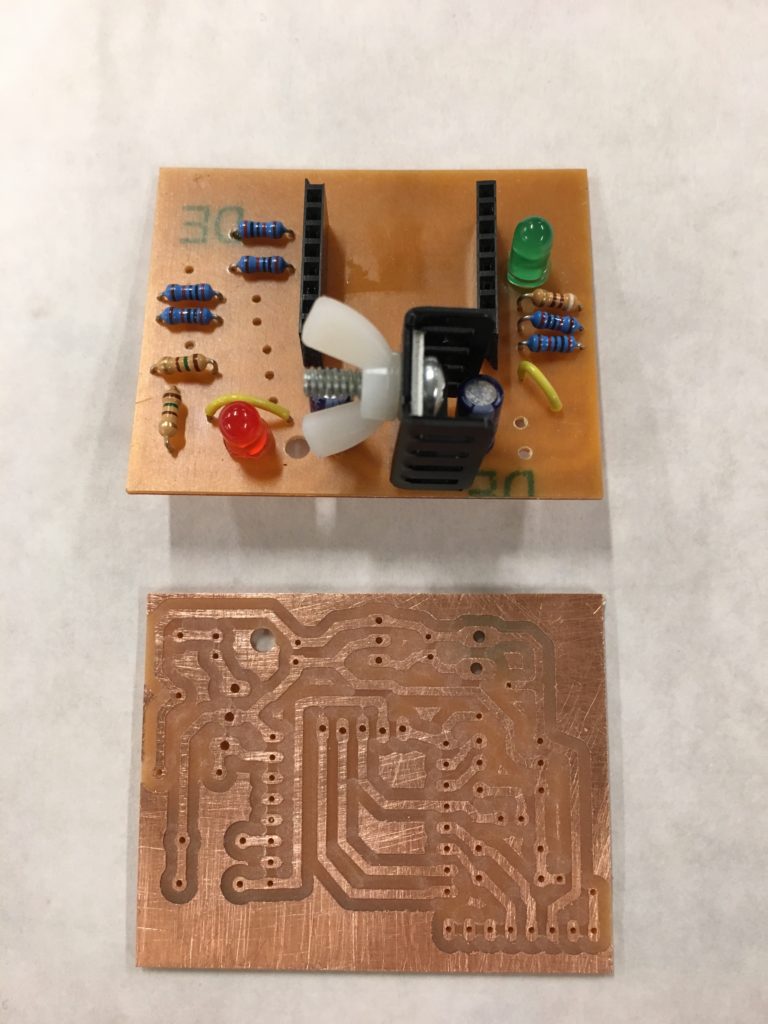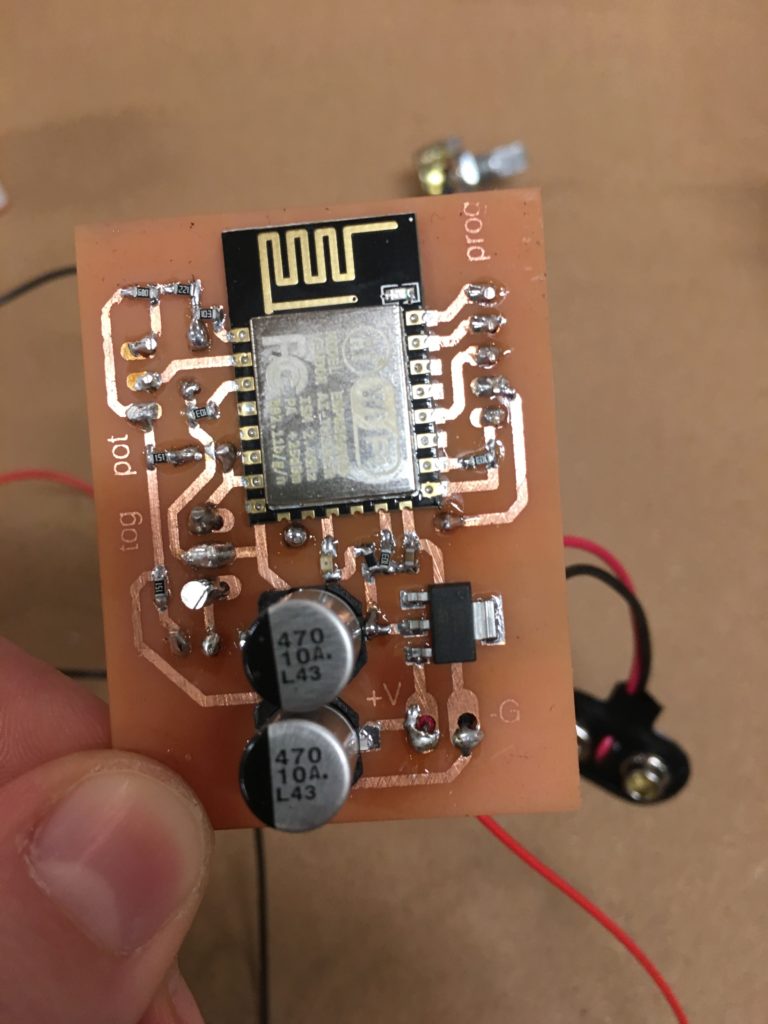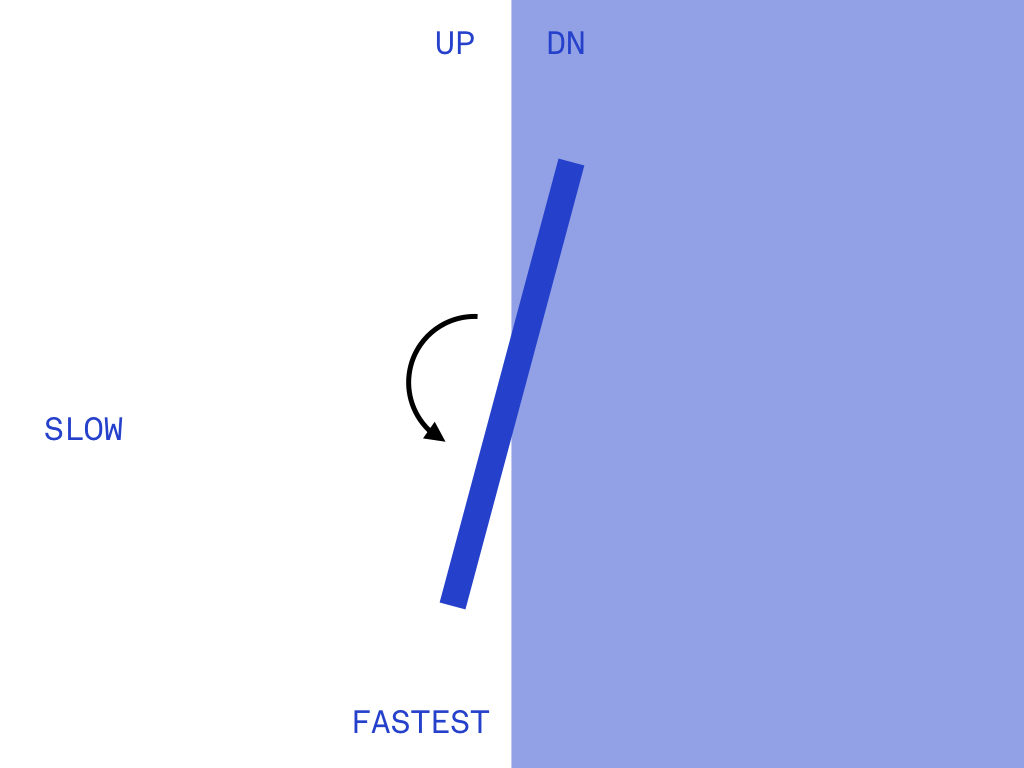The lastest controller for Pong uses a cardboard plane attached to a potentiometer to control both speed and direction of the virtual paddle. The rotation of the potentiometer divided in half to control direction, and then within that extent, speed is modulated.
Process
Because the ESP Chip is somewhat expensive (relatively), I invested in protyping my circuit on breadboards and milled boards on to which the chip could plug in temporarily.


In order to prototype directly with the chip rather than a breakout board, I needed a programming jig for connecting via USB and closing certain routes on particular pins. When programming…
- GPIO0 needs to be connected to GND. A button was held while uploading code.
- Reset need to be flashed. A button was pressed initially before programming.
- Tx and Rx connections between the ESP chip and FTDI cable were accomodated with header pins


The Board
The ESP chip draws a significant amount of power; however, conflicting advice online made it difficult to size capacitors. Although, I found these tips to be most helpful. While they recommend a very large capacitor (470 uF) across the Vcc to Gnd, the Adafruit breakout only used 10 uF. While I included two 470 uF capacitors, my next iteration would explore smaller size. However, a 0.1 uF decoupling capacitor across the ESP8266 Vcc to Gnd inputs very close to the pins was a critical addition.


